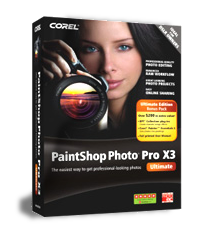
The Full Editor workspace contains many palettes that organize information and commands to help you edit your images. Some palettes appear automatically when you start the Full Editor, others appear when you activate certain tools, and some palettes appear only when you choose to open them. You can easily turn a palette on and off by using the Palettes drop-list on the Standard toolbar, or by choosing View> Palettes.
Palettes display information and may contain both controls and command buttons. Like toolbars, palettes can be moved from their default docked position.
|
Palette |
Description |
|---|---|
|
Learning Center |
Displays information about workflow, tools, and commands to help you complete common tasks quickly and efficiently. |
|
Media Tray |
Lets you gather photos from various folders so that you can edit, e-mail, or print them. You can add, remove, and rename trays within the Media Tray palette to match your workflow. |
|
Tool Options |
Displays settings and controls for the active tool. |
|
Materials |
Lets you choose colors and materials for painting, drawing, filling, and retouching |
|
Layers |
Lets you view, organize, and adjust settings for image layers |
|
Overview |
Displays a thumbnail of the active image; lets you set a zoom level, and displays image information |
|
History |
Lists the actions taken on the active image; lets you undo and redo adjacent or nonadjacent actions; and lets you create a Quickscript that can be instantly applied to other open images. |
|
Histogram |
Displays a graph of the distribution of red, green, blue, grayscale, hue, saturation, and lightness values in an image. You can analyze the distribution of detail in the shadows, midtones, and highlights to help you decide how to make corrections. |
|
Brush Variance |
Lets you set additional brush options when you use a paint brush or any other raster painting tool. This palette is particularly useful when you use a pressure-sensitive tablet or a four-dimensional mouse. For example, you can vary the opacity of a brushstroke by applying pressure with the stylus. Some options also work well with a mouse. |
|
Mixer |
Lets you place and mix pigments to use with the Oil Brush tool and the Palette Knife tool, allowing you to create realistic strokes with oil paints on Art Media layers |
|
Script Output |
Displays a list of your actions and results when you run scripts |
Keywords: palettes, used, information, learning, psp
Was this article helpful?
Tell us how we can improve it.